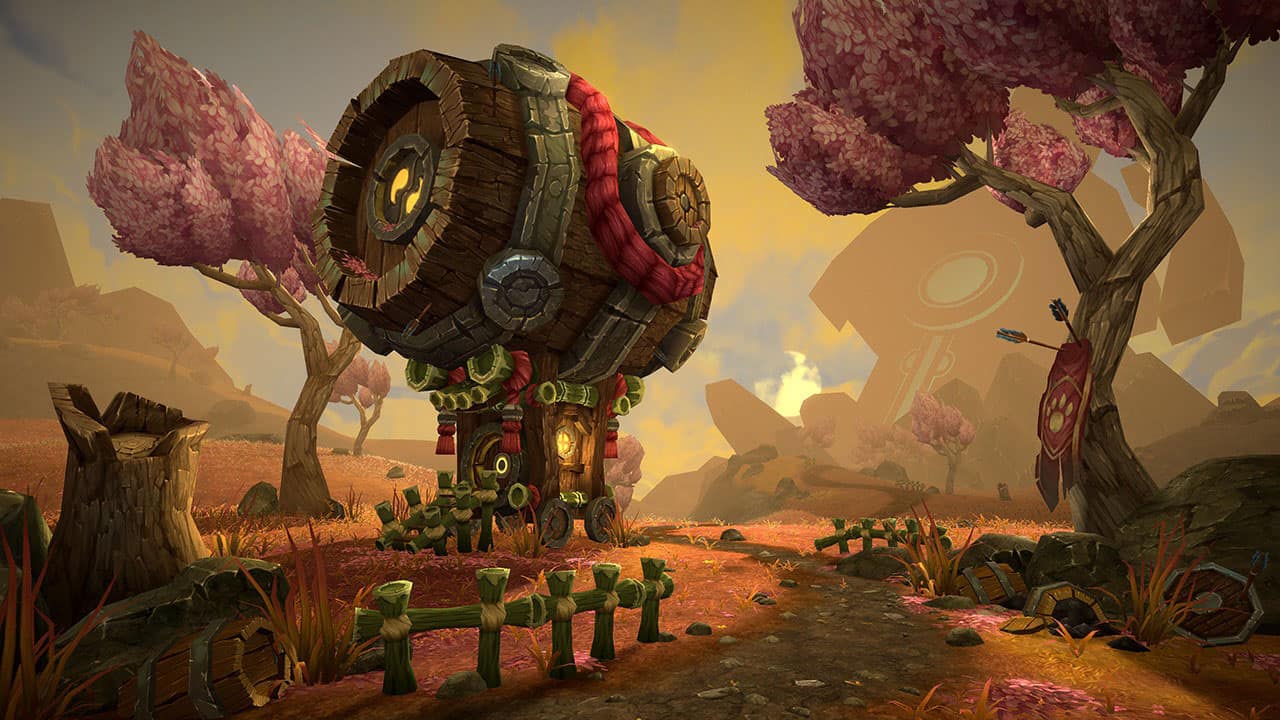Blizzard Contest Awards Game Development Student
Students from the Academy’s School of Game Development have a strong track record in Blizzard Entertainment’s World of Warcraft art competition. Academy candidates have been awarded prizes in five the contest’s seven annual rounds for their game design portfolio, including this year’s, in which MFA student Zhuoyang Liu was honored in the Environment Art category.
Liu is the 14th Academy student to take home an award in the contest and third to win in Environment Art.
In October 2017, competition entries were opened by the WoW development team for original artworks for the game’s vast universe and various story arcs. In addition to Environment, contest categories included Character, FX and Animation. Winners were selected mid-March.
“I’m a huge WoW fan and I do a similar style,” says Liu, “so I knew I could create something that fits within that world. I learned a lot from trying to make these scenes, so it was exciting to find out they chose me.”
According to Blizzard’s WoW Art Manager Jeff Parrott, Liu’s entry effectively evoked the visual style of the PC game.
“It was really clear that Zhuoyang studied [the] World of Warcraft art style and created a piece that looks like it could live within the world,” Parrott says. “[He] created an environment with a clear focal point and nice focus on storytelling.”
Liu’s submission, titled “Yang’s Moving Bar,” features a small building sporting a barrel much larger than its roof. The story behind the piece, Liu says, is about a Pandaren (WoW’s humanoid panda race) escaping the war, taking with him an alcohol supply to support his Pandaren predispositions.
According to Liu, story is just as important as execution when creating such scenes. As part of the prize pack, Liu was sent to Southern California along with the other contest winners to meet with Blizzard’s WoW teams and participate in one-on-one mentor sessions and portfolio reviews with senior artists. Liu said special emphasis was placed on composition.
“One thing I learned is that I should be careful in thinking about each element and why it belongs in the scene, how does it fit within the story,” Liu explains. “Have a reason, don’t just throw things into [the scene] just randomly. Everything has to have a purpose.”
“[Liu] is super dedicated,” says Anwar Bey-Taylor, School of Game Development 3D art instructor, who taught Liu when he first arrived at the university. “The way he used a modular system to create a few pieces and just use those to make the scene is super optimal and [an] advanced environment technique.”
Originally from China, Liu transferred to the Academy from New York University in 2017, intent on learning every step of the game development pipeline. Bey-Taylor says Liu was in three of the instructor’s classes that first semester—Digital Sculpting, 3D Environments and Texture & Lighting. Liu consolidated individual class projects to replicate a real-world, professional studio workflow.
“[Liu] definitely has some really good concepting skills—just an ability to draw all the ideas he had in mind—and he definitely has a lot of creative ideas of how to put things together,” Bey-Taylor says. “He was super into modular environment creations and that’s a pretty common skill for professional environment artists, but it’s not something I noticed [a lot of] students are super passionate about, although it’s very powerful and useful.”
Following graduation, Liu says he hopes to land a position with a major studio, such as Blizzard, continuing in the footsteps of other Game Development GAM alums.
“I originally entered the contest just for fun. The whole experience—being awarded a prize, visiting the headquarters and speaking with their artists—says [that] I’m headed in the right direction.”
